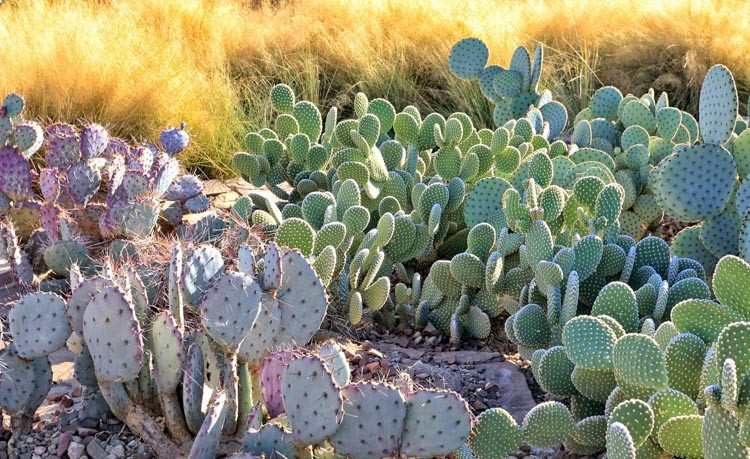Opuntia
Opuntia, commonly known as prickly pear cactus, is a diverse and fascinating genus of plants belonging to the Cactaceae family. This unique group of plants is native to arid and semi-arid regions of the Americas, from the southwestern United States to Mexico, Central, and South America. They are well-adapted to survive in harsh desert environments, boasting a range of features that enable them to thrive in conditions where other plants may struggle.
Growth Habit: The growth habit of Opuntia species varies but typically involves flat, fleshy pads called cladodes or nopales. These pads are modified stems that store water and perform photosynthesis. The pads range in size, shape, and color, depending on the species, and can be oval, round, or elongated. Some Opuntia species grow low and sprawling, while others form large, tree-like structures reaching heights of up to 15 feet (4.5 meters) or more.
Flowers: Opuntia plants produce beautiful, cup-shaped flowers that bloom in spring and summer, depending on the species. The flowers come in various colors, including yellow, orange, red, and pink, and often have a satin-like sheen.
Edible Fruits: Following the flowering period, Opuntia produces edible, fleshy fruits called tunas or prickly pears, which are often consumed fresh or used in culinary applications such as jams, jellies, and beverages. Fruits are rich in vitamins and antioxidants, providing numerous health benefits.
Hardiness: Hardiness varies among Opuntia species, with many able to withstand temperatures as low as 15°F (-9°C). They are generally considered suitable for USDA hardiness zones 9-11, though some cold-hardy species can be grown in zones as low as 4.
Drought Tolerance: Drought-tolerant and heat-loving, these plants require minimal water and can withstand long periods without rainfall.
Uses: The uses of Opuntia are vast and diverse. These succulents are often used in landscaping as accent plants or barriers, thanks to their striking appearance and spines. In addition to their ornamental appeal, many species offer edible parts, including pads (nopales) and fruits (tunas). Opuntia plants also have medicinal uses, with traditional applications for treating ailments like diabetes, high cholesterol, and digestive issues.

